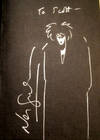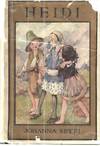

Explaining the Atom
by Hecht, Selig, and Rabinowitch, Eugene
- Used
- Good
- Hardcover
- Condition
- Good
- Seller
-
Silver Spring, Maryland, United States
Payment Methods Accepted
About This Item
New York: The Viking Press, 1954. Revised and Enlarged Edition, with Four Additional Chapters. Hardcover. Good. xviii, 237, [1] pages. Periodic Table illustrated on endpapers. Illustrations. Some footnotes. Index. Some pencil marks and erasure residue. Cover has noticable wear and soiling. Selig Hecht (1892 - 1947) was an American physiologist who studied photochemistry in photoreceptor cells. Hecht was born in Austria, and immigrated to the USA at an early age. His studies and talents led to Columbia University making him professor of biophysics in 1928. Hecht began his study into light sensitivity with clams (Mya arenaria) and insects. His specialty was photochemistry, the kinetics of the reactions initiated by light in the receptors. He made contributions to the knowledge of dark adaptation, visual acuity, brightness discrimination, color vision, and the mechanism of the visual threshold. According to biographer Pirenne, Hecht was a "brilliant lecturer and expositor." When World War II ended with the use of atomic weapons which had been developed in secret by the Manhattan Project, Hecht was concerned that the American public was uninformed about the development of this new source of energy. He wrote a book Explaining the Atom (1947), to educate the public. He wrote, "So long as one supposes this business is mysterious and secret, one cannot have a just evaluation of our possessions and security. Only by understanding the basis and development of atomic energy can one judge the legislation and foreign policy that concern it." In a review in the New York Times (4/27/1947), Stephen Wheeler wrote that it was "by all odds the best book on atomic energy so far to be published for the ordinary reader." Similarly, James J. Jelinek wrote that it was an "invaluable contribution to the layman." He credits Hecht with "conveying to the layman the intellectual drama" of the development. Jelinek asserts that the book is "profoundly provocative in its political and sociological implications." After Hecht died, a second edition was issued in 1959 by Eugene Rabinowitch. Eugene Rabinowitch (1901-1973) was a Russian-born American biophysicist who is best known for his work in relation to nuclear weapons, especially as a co-author of the Franck Report and a co-founder in 1945 of the Bulletin of the Atomic Scientists, a global security and public policy magazine, which he edited until his death. When Rabinowitch arrived in New York City, he was assisted by Selig Hecht. During World War II, Rabinowitch worked in the Metallurgical Laboratory (or "Met Lab"), the Manhattan Project's division at the University of Chicago. At that time he was a member of the Committee on Political and Social Problems, chaired by James Franck. Rabinowitch wrote (with help from Leó Szilárd) what became known as the Franck Report. The report recommended that nuclear energy be brought under civilian rather than military control and argued that the United States should demonstrate the atomic bomb to world leaders in an uninhabited desert or barren island before using it in combat. The social and ethical concerns expressed in the Franck Report translated into the guiding principles of the Bulletin of the Atomic Scientists, founded by Rabinowitch and fellow physicist Hyman Goldsmith. Over the years, Rabinowitch wrote more than 100 articles for the magazine, most of them editorials. Before the war, Rabinowitch passionately pursued research in photosynthesis, a field in which he was to become a leader. After World War II, Rabinowitch taught and researched botany as a professor at the University of Illinois at Urbana-Champaign, continuing his photosynthesis work and publishing the three-volume Photosynthesis and Related Processes, as well as many other books.
Reviews
(Log in or Create an Account first!)
Details
- Bookseller
- Ground Zero Books
(US)
- Bookseller's Inventory #
- 73823
- Title
- Explaining the Atom
- Author
- Hecht, Selig, and Rabinowitch, Eugene
- Format/Binding
- Hardcover
- Book Condition
- Used - Good
- Quantity Available
- 1
- Edition
- Revised and Enlarged Edition, with Four Additional Chapters
- Publisher
- The Viking Press
- Place of Publication
- New York
- Date Published
- 1954
- Keywords
- Atomic Bomb, Atoms, Molecules, Nucleus, Isotopes, Fission, Radioactive, Uranium, Plutonium, Atomic Energy Commission, U-235, Thermonuclear, Nuclear Weapons, Chain Reaction, Disarmament
Terms of Sale
Ground Zero Books
Books are offered subject to prior sale. Satisfaction guaranteed. If you notify us within 7 days that you are not satisfied with your purchase, we will refund your purchase price when you return the item in the condition in which it was sold.
About the Seller
Ground Zero Books
Biblio member since 2005
Silver Spring, Maryland
About Ground Zero Books
Founded and operated by trained historians, Ground Zero Books, Ltd., has for over 30 years served scholars, collectors, universities, and all who are interested in military and political history.
Much of our diverse stock is not yet listed on line. If you can't locate the book or other item that you want, please contact us. We may well have it in stock. We welcome your want lists, and encourage you to send them to us.
Much of our diverse stock is not yet listed on line. If you can't locate the book or other item that you want, please contact us. We may well have it in stock. We welcome your want lists, and encourage you to send them to us.

